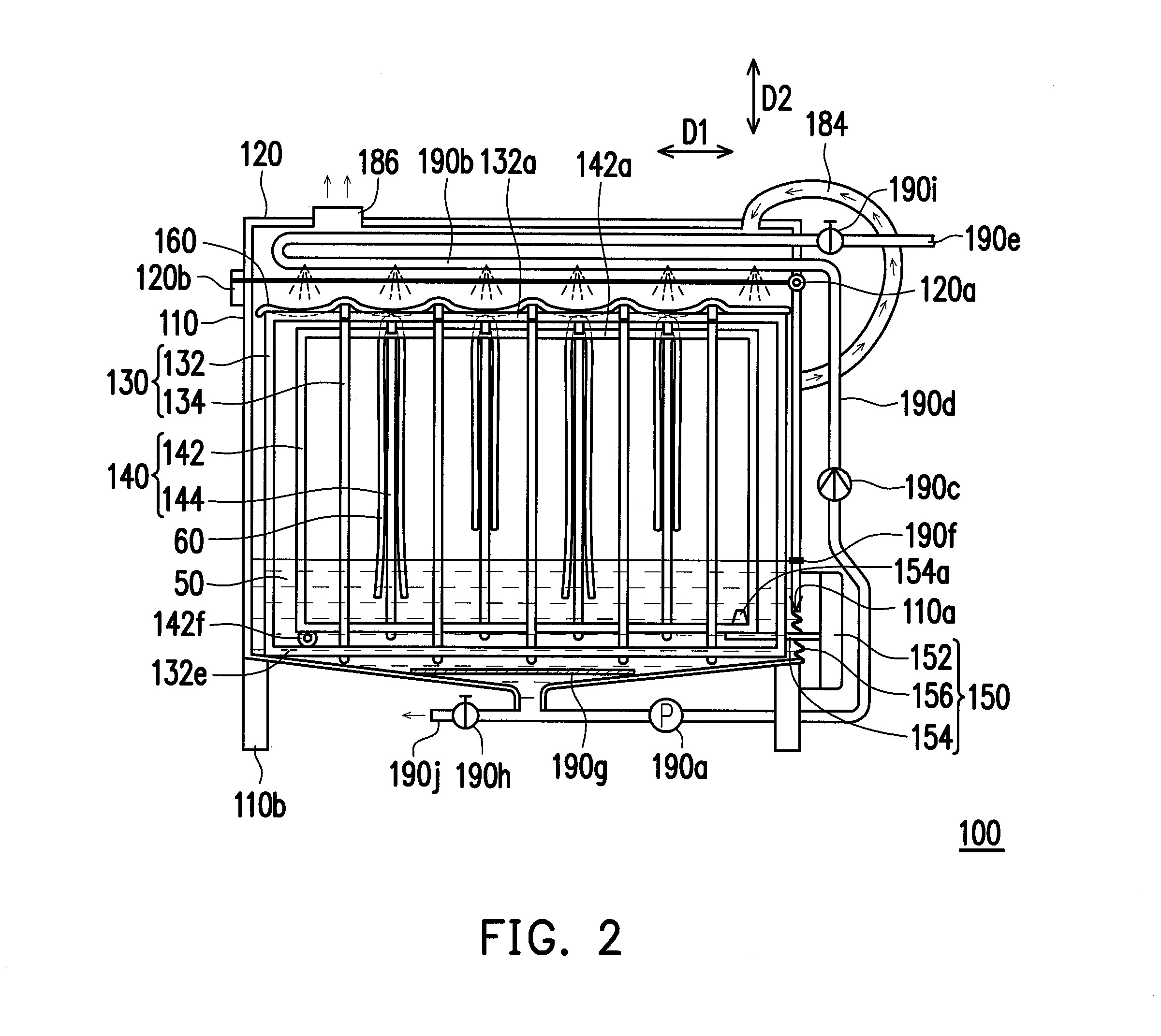Cleaning apparatus
a cleaning apparatus and water cleaning technology, applied in the direction of washing machines with receptacles, textiles and papermaking, other washing machines, etc., can solve the problems of large amount of electric current, large amount of power consumption, so as to save electricity and water consumption, shorten cleaning time, and improve cleaning ability.
- Summary
- Abstract
- Description
- Claims
- Application Information
AI Technical Summary
Benefits of technology
Problems solved by technology
Method used
Image
Examples
Embodiment Construction
[0041]FIG. 1 is a front view of a cleaning apparatus according to an embodiment of the invention. FIG. 2 is a schematic longitudinal cross-sectional view illustrating the cleaning apparatus of FIG. 1. Referring to FIG. 1 and FIG. 2, a cleaning apparatus 100 of the present embodiment, for example, is a water cleaning washing machine and includes a chamber 110, a cover 120, a fixed assembly 130, a movable assembly 140 and a driving unit 150. The chamber 110 is supported by foot stands 110b thereof and adapted to receive a cleaning liquid 50, and the cleaning liquid 50, for example, is water and water-soluble detergent. The cover 120 is coupled to the chamber 110 through a hinge 120a and is configured to cover the chamber 110. The fixed assembly 130 is disposed within the chamber 110, and the movable assembly 140 is movably disposed on the fixed assembly 130. An object to be washed, for example, is a load of laundry (viz., a plurality of clothes) 60 and is adapted to be spread flat and...
PUM
 Login to View More
Login to View More Abstract
Description
Claims
Application Information
 Login to View More
Login to View More - R&D
- Intellectual Property
- Life Sciences
- Materials
- Tech Scout
- Unparalleled Data Quality
- Higher Quality Content
- 60% Fewer Hallucinations
Browse by: Latest US Patents, China's latest patents, Technical Efficacy Thesaurus, Application Domain, Technology Topic, Popular Technical Reports.
© 2025 PatSnap. All rights reserved.Legal|Privacy policy|Modern Slavery Act Transparency Statement|Sitemap|About US| Contact US: help@patsnap.com



